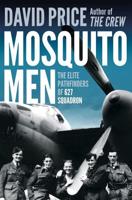Publisher's Synopsis
Jet airliner operations in the United States began in 1958, bringing, it was thought, a new era of fast, high, safe, smooth, sophisticated travel. But almost immediately, the new aircraft were involved in incidents and accidents that showed jets created new problems even as they solved old ones. This book discusses five disasters or near-disasters of the early Jet Age, experiences which shook the industry, regulators and public out of early complacency and helped build a more realistic foundation for safer air transportation.
Special attention is paid to the 1966 destruction of Braniff International Airways Flight 250 in Nebraska. Nearly two years of inquiry helped advance the understanding of jet operations in severe weather and saw the first use of cockpit voice recorder technology in an aviation accident investigation. In addition, a University of Chicago professor, Dr. Tetsuya "Ted" Fujita, conducted a more intensive investigation of the weather system which downed Flight 250. Dr. Fujita's already extensive knowledge of thunderstorms and tornadoes led to his creation of the Fujita Scale of Tornado Intensity, the F-scale that we hear about so frequently during storm season.










